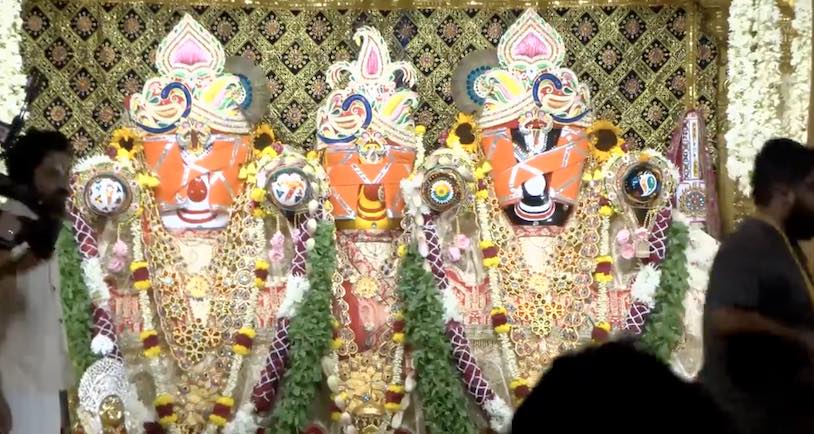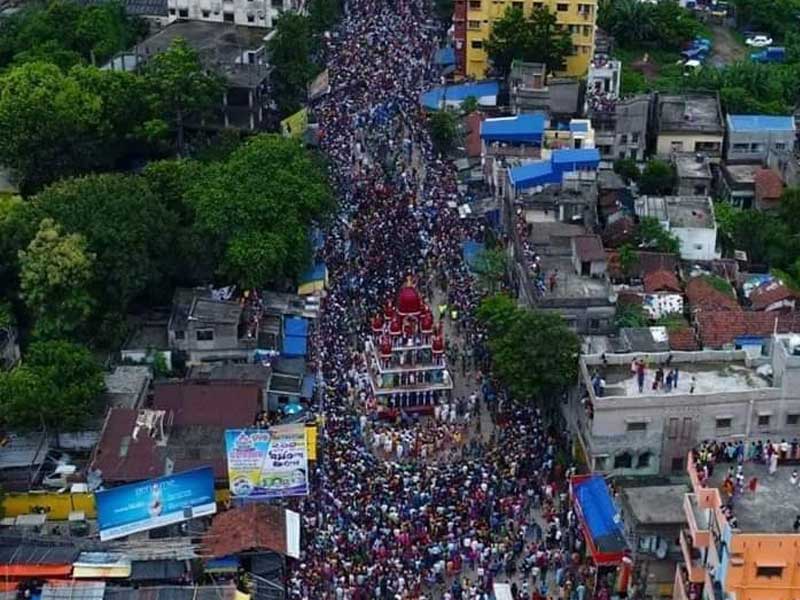Bhubaneswar: The coastal town of Puri in Odisha is synonymous with Rath Yatra. But, the world famous festival is also celebrated in other parts of the country. Devotees in other Indian states observe the festival and offer their prayers to the sibling deities—Lord Jagannath, Lord Balaram and Goddess Subhadra.
Here’s how rest of India is celebrating Rath Yatra this year:
1) ISCKON, Kolkata: It is the second biggest Rath Yatra in the world after the one that is held in Puri. According to ISCKON Kolkata vice president Radharaman Das, last year about 20 lakh people had participated in the yatra as the chariots rolled down the streets of Kolkata. “We are expecting that about 24 lakh people will join the festival this time. Chief minister Mamata Banerjee will inaugurate the Rath Yatra at around 2pm and the chariots will travel for around 6 km to finally reach the Brigade Ground,” he said. The deities will be kept at the Brigade Ground for the next eight days until the day of Bahuda Yatra. Devotees are allowed to visit the deities in the evening from 4 pm during their stay at the Brigade Ground and offered ‘Khichdi bhog’ as ‘prasad.’
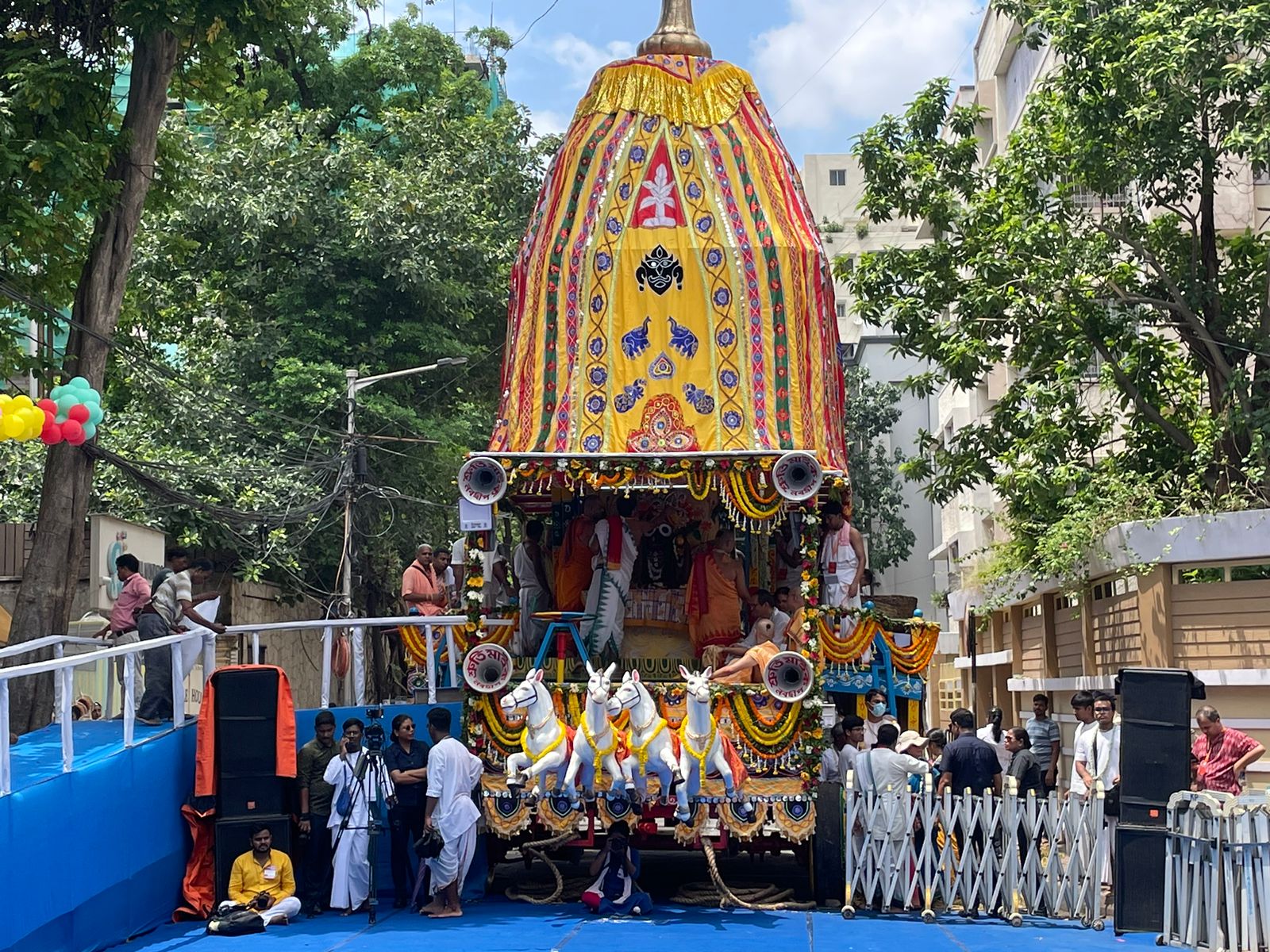
2) Rath Yatra in Bengal’s Mahesh Town: It is believed to be the second oldest chariot festival in the world after Puri. It is held in Mahesh, adjacent to the riverside town of Sreerampore in Bengal’s Hooghly district. Rath Yatra has been celebrated here since 1396. This year, the festival has entered its 628th year. “The mangalarati was performed at 5am. The Lord were offered bhog around 8am and then the deities were taken out for the parikrama. We will perform the ‘damodar’ around 2pm. Firstly, Narayan dev is placed on the chariot, followed by Lord Balaram, Goddess Subhadra and Lord Jagannath,” said Mrinal Krishna Adhikari, the in-charge of the festival.
According to the local legends, a Bengali sadhu called Drubananda Brahmachari was once denied the chance to offer ‘bhog’ to Lord Jagannath in Puri. The sage observed a fast until death. Locals said on the third day of the fast, Lord Jagannath appeared in his dreams and told him to make the idols of the dities with ‘daru-brahma’ (neem trunk). The Lord wanted to have ‘bhog’ from his disciple. He then returned to Mahesh and made the idols, which are now worshipped at Jagannath temple in Mahesh. It is also believed that once Sri Chaitanya – on his way to Puri – visited the temple at Mahesh, where he lost his consciousness and attained deep ‘samadhi’. This is why he rechristened Mahesh as Naba Nilachal (new Puri). Kamalakar Piplai, the head priest and his disciple, started Rath Yatra festival there.
3) Digha’s upcoming Jagannath Dham: The seaside town of Digha holds Rath Yatra presently in a humble manner. But, Bengal chief minister on Friday announced that the festival would be celebrated in a grand scale from next year. This will happen with the completion of the mega Jagannath Dham— a replica of the Puri’s Srimandir—some time soon. Spread over 22 acres, the temple with a height of 214ft is said to scale the Puri temple height. It is being made with red sandstone from Rajasthan.
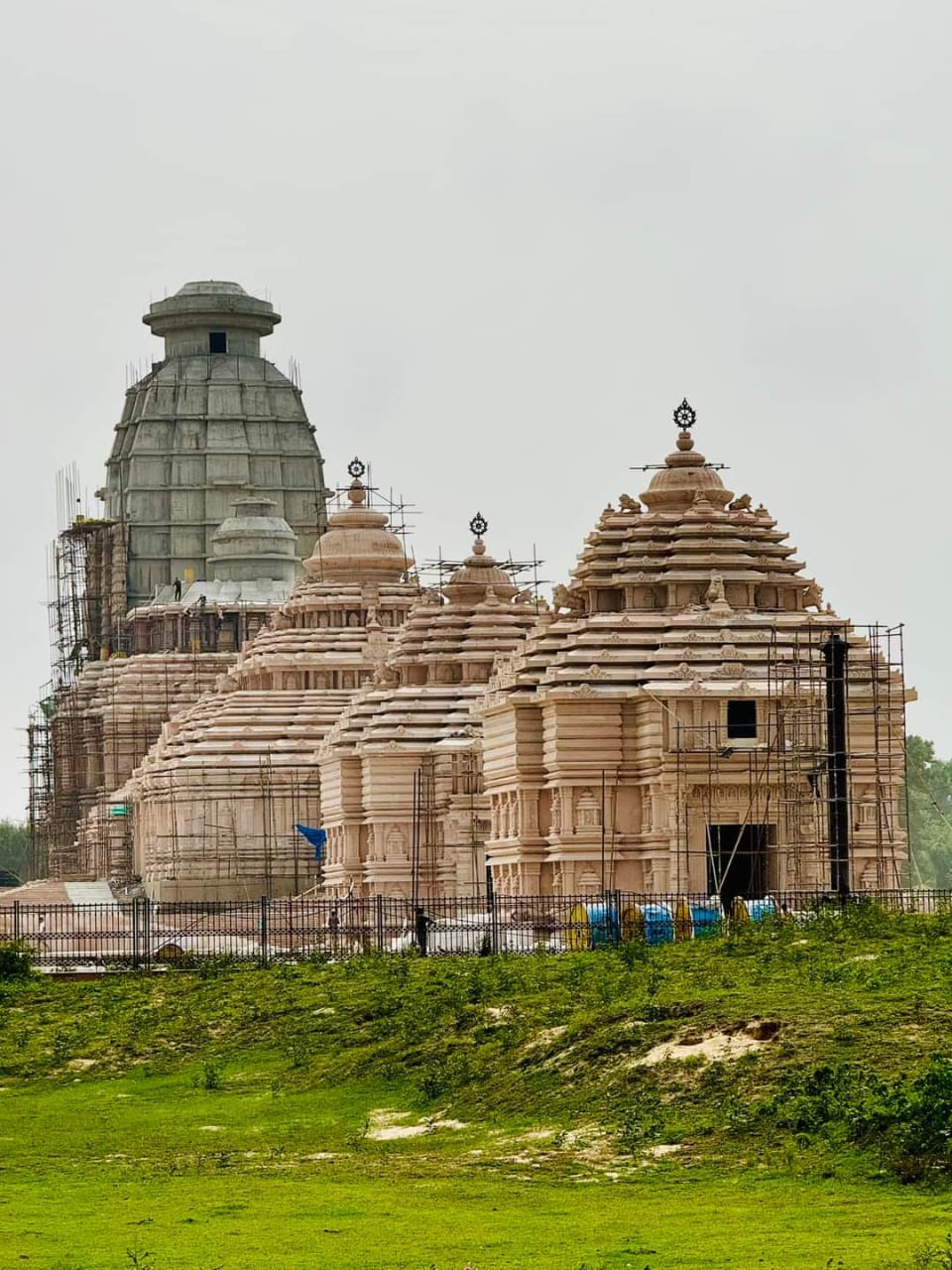

4) Goncha festival of Bastar: It is believed that Purshottam Dev, the Kakatiya ruler of Bastar, travelled to Puri in the fifteenth century, forging a link with the temple, and bringing back with him the practice of the Rath Yatra. It is known by the name of Goncha festival here. Goncha, a type of fruit, and Tukki or bamboo is used in the celebration. A dummy pistol is made out of Tukki and the fruit is used as bullet. The traditional tribal practice is that devotees hit each other in mock shootout. This is a symbolic form of Guard of Honour for the deities. It is believed that the king of Puri had gifted Purushottam Deo a 16-wheeled chariot along with the title of ‘Rathadhipati.’ Deo offered four wheels to Lord Jagannath and returned with a 12-wheeled chariot to Bastar in Chattisgarh. Since then, a total of 22 idols of Lord Jagannath, Lord Balabhadra and Devi Subhadra are taken in procession in three-four wheeled chariots in Jagdalpur, Bastar. All these idols are housed in 7 chambers of the Jagannath temple along with one dedicated to Lord Rama and Goddess Lakshmi. There are series of rituals that are performed by the 360 Ghar Aranyak Brahmin Parivar for the deities. These Odia Brahmin families had migrated from Odisha along with the king of Bastar. They perform similar rituals as in Odisha’s Puri for the festival.
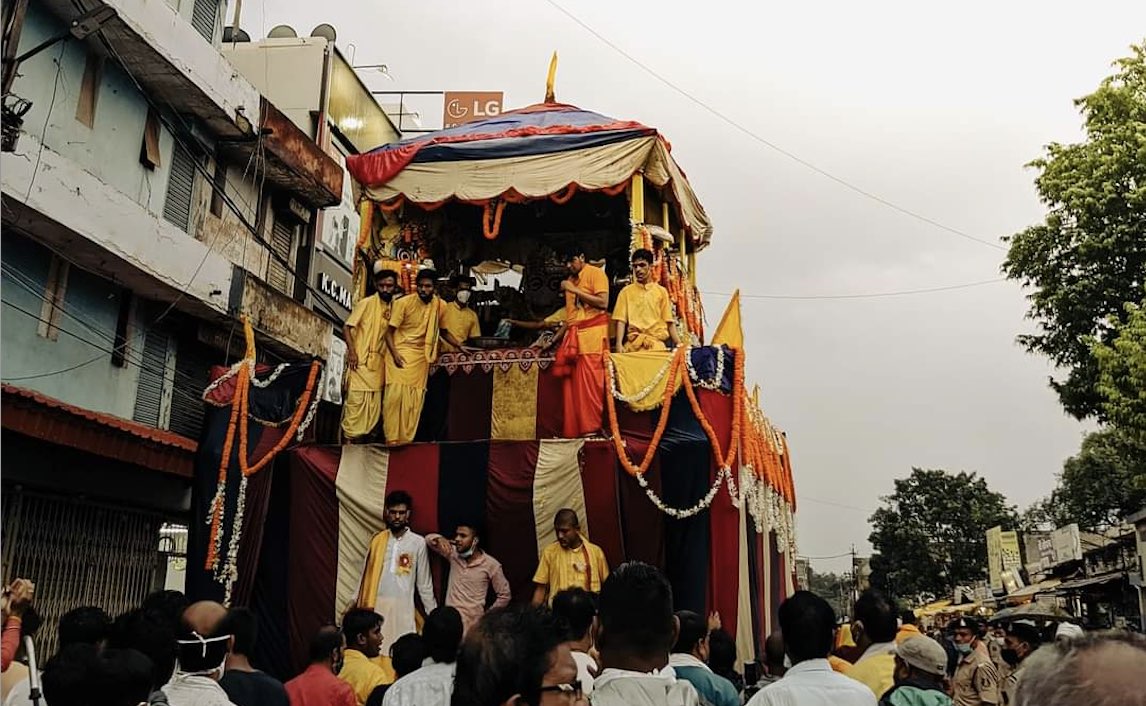
5) Offering of over 5000kg of mangoes at ISCKON Dwarka, Delhi: This year, ISCKON Dwarka in New Delhi is hosting a vibrant mango festival for Rath Yatra. The festival aims to highlight the significance of the fruit in Indian culture. The deities are being offered over 5000kg of mangoes. This will be followed by a grand aarti and distribution of mangoes as ‘prasadam.’ The altar has been decorated in a yellow theme. According to local belief, mangoes are one of the favourite fruits of Lord Jagannath. The festival will showcase 20 varieties of mangoes.
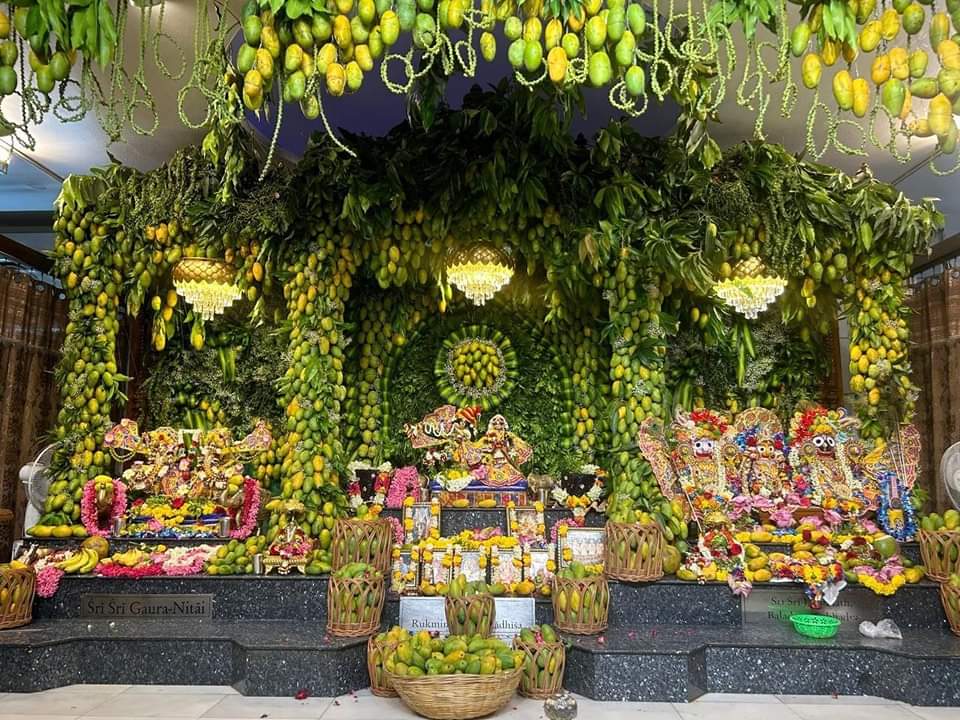
6) Mahakal adorned as Jagannath in Ujjain: Mahakaleshwar Jyotirlinga is a temple dedicated to Lord Shiva, located in the ancient city of Ujjain in Madhya Pradesh. It is one of the twelve Jyotirlingas or the shrines which are said to be the most sacred abodes of Shiva. On the day of Rath Yatra, the Shivalinga was adorned in a manner that it resembled Lord Jagannath and a special mangal aarti was performed on the occasion. Thousands of devotees along with the state’s chief minister, Mohan Yadav, visited the temple to offer their prayers.
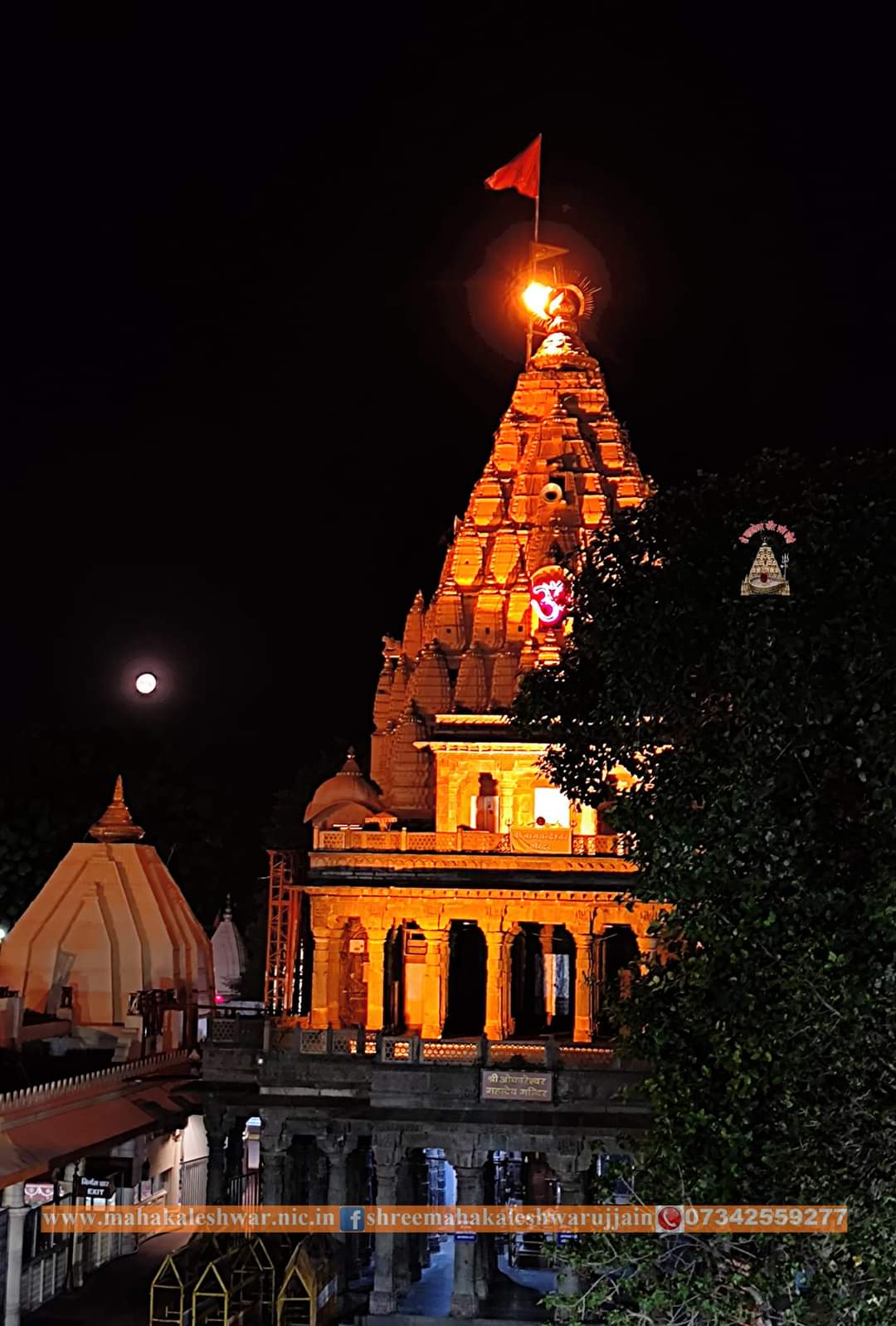

7) Yatra in Ahmedabad This year: The Rath Yatra—conducted by ISCKON Ahmedabad—entered its 147th year in Ahmedabad. The mangal aarti was performed by Union home minister, Amit Shah, and his wife, Sonal Shah.
